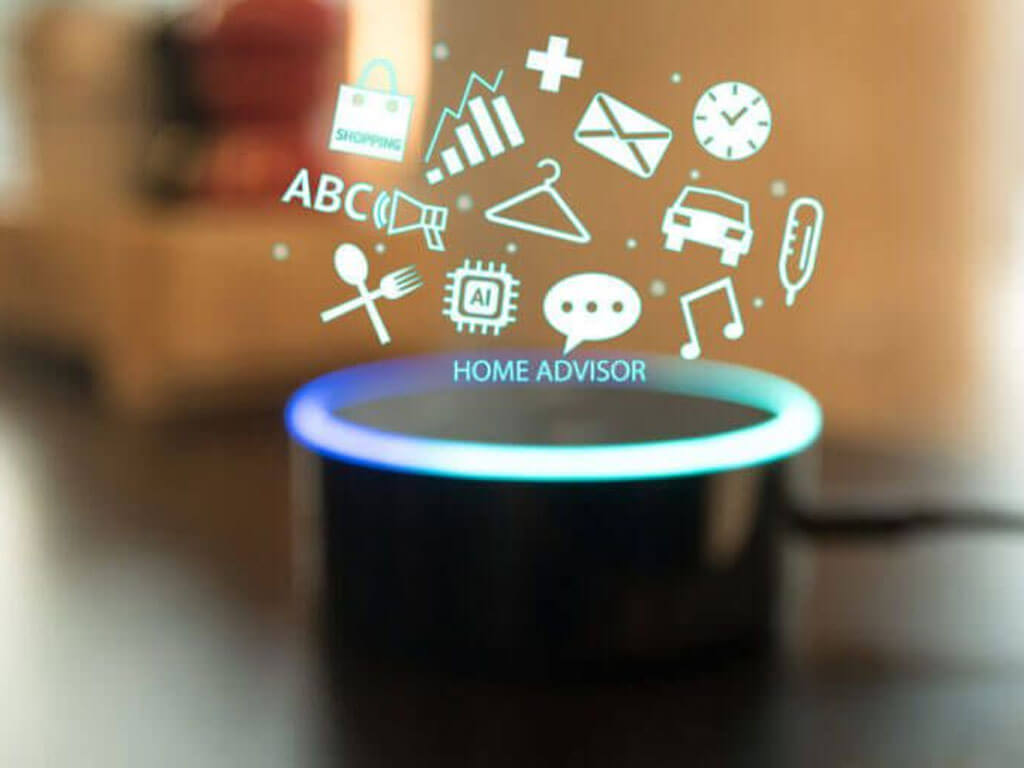When it comes to voice-only banking, home AI assistants may not be as private as we would like, nor are they able to convey as much information as our smartphones. How, then, can they deliver the privacy that banking customers need?
In my last blog post on the subject of home AI assistants and their potential role in omni-channel banking, I raised the point that without having a screen, these devices are neither engaging enough nor offer the privacy and security needed so that voice-only banking could become mainstream. Yet, voice-only does have a role to play as part of a wider omni-channel banking offering, as these scenarios demonstrate.
A personal hub
Imagine if your home AI assistant could become part of a personal hub that brings together various devices you interact with on a daily basis. These devices might include your smartphone with its discrete, touch-sensitive screen, as well as your voice-controlled home AI assistant, which openly talks back to you.
Let’s look at an example to demonstrate how a customer could purchase an item displayed on their TV using their home AI assistant while keeping their digital finances private:
The customer wants to buy the power drill their TV is currently displaying.
Customer: “Assistant, please buy one of those hammer drills that’s on the TV right now.”
Assistant: “Please start by touching the fingerprint sensor on your smartphone.”
The customer authenticates. Assistant accesses their bank account and sees they don’t have enough funds available in their current account. It displays the customer’s current and savings account balances on their smartphone screen.
Assistant: “Do you want to transfer some funds from your savings account? Let me know how much by using your smartphone.”
The customer clicks on the ‘Yes please’ displayed on their smartphone screen and then types in £100. The personal hub uses two-factor authentication to authorise the transfer.
Assistant: “Please confirm the transfer using one of the biometric authentication options on your screen.”
With this done, the smartphone displays the new account balances. There are sufficient funds for the purchase.
Customer: “Assistant, please now go ahead with the purchase.”
Assistant: “OK, the purchase is now confirmed.”
This example demonstrates a discrete and frictionless omni-channel digital customer journey. The customer’s personal hub reacts to both the customer’s voice and smartphone touches. It responds on the smartphone screen whenever information is sensitive or complex.
Note how the customer’s voice-controlled home AI assistant and smartphone are also working together to ensure the customer can afford the purchase.
For what other digital finance scenarios could this be used?
Once combined, the humanity of the home AI assistant and the power of the smartphone creates a new level of engagement with the customer, not achievable though either device alone. Suddenly, this new combination reviews a whole range of possibilities, from paying a bill to helping a customer access and comprehend complex ‘robo’ mortgage advice.
A digital banking engagement platform in the connected home
In my final example, the customer’s smart home has a connected internet of things (IoT) environment that includes a home AI assistant. Thanks to banking home AI integration, this smart assistant knows how much they spend on utilities, food shopping and other purchases. It also knows that their monthly outgoings include a mortgage and a car loan payment, and how much they spend on travel each month.
In this scenario, the customer can stay aligned with their digital finances because they are in tune with their expenses. If they want to know if they can afford a holiday deal that pops up on the TV, they can work through an affordability assessment using a combination of voice, smartphone screen, IoT and extended data sources from bureau data providers.
It’s interesting, but with so much thought going into still making the digital journey work for customers with internet and mobile banking, many providers have overlooked even the possibility that home AI assistants may be the answer they’re looking for. I wonder, have you explored what role home AI assistants will play in your customers’ digital finance experience?














